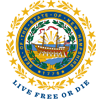Business Recoupment Relief Program Frequently Asked Questions
Frequently asked questions about the Business Recoupment Relief Program.
- Who is eligible for this program?
- How much money will I receive if I am eligible?
- How do I know if I am a Self-certification or Document business for applying for this program?
- If I owe more than $20,000 in recoupment, can I submit the Self-Certification application for my first $20,000 in claimed COVID-19 related business expenses and then submit the Document application for expenses over that amount up to the total amount I have in recoupment?
- What if I realize I made an error in my application after I have submitted it? How can I correct it?
- My business has over $20,000 in recoupment and is using the Document application to claim COVID-19 related business expenses in excess of $20,000, what level of documentation is required?
- How will I know if I still remain in recoupment after applying for relief in this program?
- Can I claim additional payroll costs?
- Application Questions 1 and 2 in Step 2 seem to require that my business have been closed. We were never closed, but still had increased expenses for PPE, social distancing, and other COVID-19 costs. Can we still obtain the offset?
- Application Question 3 in Step 2 allows increased costs of doing business as a result of COVID-19, what types of expenses are allowed?
- Who is eligible for this program?
-
This program is only open to MSRF 1.0, MSRF 2.0, SELF, GAP For-profit, and 2020 Live Venue program awardees that are notified by the Department of Revenue or GOFERR that their reporting indicates that they owe recoupment per federal requirements, because their actual revenue losses do not cover the full amount of their award. A separate future program will be open later this year for for-profit businesses generally that will be based on unreimbursed COVID-19 expenses.
- How much money will I receive if I am eligible?
-
Eligible Recoupment Relief Program awardees will not receive any additional funding. However, they can cover up to the full amount of their 2020 award that is in recoupment by claiming qualified COVID-19 related business expenses incurred from March 1, 2020 to June 24, 2021.
The Recoupment Relief program modifies the terms of the initial 2020 awards to allow COVID-19 related business expenses to offset up to the full amount in recoupment. No new awards will be issued and no payments will be made, this is an offset program only.
- How do I know if I am a Self-certification or Document business for applying for this program?
-
Self-Certification is for businesses that are notified that they have recoupment that wish to claim $20,000 or less in qualified, 2020 and 2021 COVID-19 related business expenses.
The Document application is for businesses that are notified that they have recoupment that wish to claim more than $20,000 in qualified, 2020 and 2021 COVID-19 related business expenses. (A list of eligible expenses is included below).
- If I owe more than $20,000 in recoupment, can I submit the Self-Certification application for my first $20,000 in claimed COVID-19 related business expenses and then submit the Document application for expenses over that amount up to the total amount I have in recoupment?
-
No, you cannot file two applications, but you can choose whichever application is most appropriate for your business.
If you claim $20,000 or less in expenses, you may submit a Self-Certification application. If you claim more than $20,000 in expenses you should submit a Document application.Because only one application will be processed, you should not submit your application until you are certain it is complete and you have the correct documents (if required) ready to upload as you will not be able to make changes after submission. You can save your application and finish it later, if needed.
- What if I realize I made an error in my application after I have submitted it? How can I correct it?
-
Because only one application will be processed you should not submit your application until you are certain it is complete and you have the correct documents (if required) ready to upload as you will not be able to make changes after submission. You can save your application and finish it later, if needed.
If you realize that you made an error or omitted a document before the application period closes and before you have received notice of the results of your application, you may submit a new application that contains the correct information. If there are multiple applications for an entity when GOFERR reviews them, GOFERR will assume that the application filed last in time is the most complete and will only process the last submitted application.
GOFERR will not process subsequent applications after notice of your results has been sent. If you believe you made an error in the information you provided in your application that might have impacted your eligibility, information regarding how to submit an appeal will be contained in the notice of results.
- My business has over $20,000 in recoupment and is using the Document application to claim COVID-19 related business expenses in excess of $20,000, what level of documentation is required?
-
You should submit your 2020 and 2021 expenses such as QuickBooks expense ledgers or other types of accounting software as they are kept in your normal course of business that itemize expenses. If you do not use any type of accounting software to track expenses will you need to submit copies of actual paid invoices or payments. Please convert your documentation to a PDF format. Such documentation must be legible.
- How will I know if I still remain in recoupment after applying for relief in this program?
-
Your eligible expenses will be deducted from the amount you owe in recoupment. If you owe more in recoupment than you have in eligible expenses, you will only owe the balance. Please see the visual demonstrations below on how the program works and examples of instances in which a business might still have recoupment.


- Can I claim additional payroll costs?
-
No. Payroll costs will not be allowed as offsetting expenses.
- Application Questions 1 and 2 in Step 2 seem to require that my business have been closed. We were never closed, but still had increased expenses for PPE, social distancing, and other COVID-19 costs. Can we still obtain the offset?
-
Yes, Question 3 in Step 2 allows increased costs of doing business as a result of COVID-19.
- Application Question 3 in Step 2 allows increased costs of doing business as a result of COVID-19, what types of expenses are allowed?
-
The following is a non-exclusive list of examples related to all of the expense-category questions within the application, but we have also suggested potential categories for some of the below expenses.
Application categories and some potential expenses as examples (not exhaustive):
- Fixed Costs incurred while closed due to COVID-19:
- Prorated Rents, mortgage payments and utility costs for business property (not home offices) for the period an awardee was/is closed due to COVID-19
- Costs incurred as a result of reopening to the public after COVID-19 related closure:
- Displaying and/or communicating safety requirements for public access
- Marketing to announce reopening
- Restocking costs
- Increased cleaning and sanitation charges
- Creation or expansion of contactless ordering systems
- Increased use of disposable products
- Signage concerning COVID requirements
- Equipment costs related to new or expanded use of outdoor space including tents, heaters, tables, and chairs
- Increased costs of doing business as a result of COVID-19:
- Protective masks
- Hand sanitizer
- Personal protective equipment
- Testing supplies
- Air filtration system improvements
- Increased workforce and trainings on safety
- Plexiglas barriers
- Installing physical safety measures meant to protect the public and employees from the transmission of COVID-19 in order to reopen a business
Potential 2020 and 2021 COVID-19 related expenses (general list; not exhaustive):
- Prorated Rents, mortgage payments and utility costs for business property (not home offices) for the period an awardee was/is closed due to COVID-19
- Reopening to the public costs after a closure due to COVID-19 including:
- Displaying and/or communicating safety requirements for public access
- Marketing to announce reopening
- Restocking costs
- Increased cleaning and sanitation charges
- Creation or expansion of contactless ordering systems
- Increased use of disposable products
- Signage concerning COVID requirements
- Equipment costs related to new or expanded use of outdoor space including tents, heaters, tables, and chairs
- Costs for the purchase of items or equipment to protect the public and employees from the spread of COVID-19:
- Protective masks
- Hand sanitizer
- Personal protective equipment
- Testing supplies
- Air filtration system improvements
- Increased workforce and trainings on safety
- Plexiglas barriers
- Installing physical safety measures meant to protect the public and employees from the transmission of COVID-19 in order to reopen a business
- Capital improvement costs necessary to provide social distancing such as:
- Room dividers
- Adding space to an existing building
- Creating outdoor space to increase social distancing options
- Tents and heaters for providing outdoor services
- Rental of additional space to serve the same number of clientele
- Expenses incurred to facilitate compliance with COVID-19-related public health measures such as:
- Distance learning
- Telehealth, telework
- Additional paid sick and family and medical leave
- Increased workforce and trainings on safety
- Creating indoor or outdoor space to increase social distancing options including tents and heaters for providing outdoor services
Other expenses will be allowed as long as there is a direct relationship to responding to COVID-19, except for payroll costs, which are not allowed.
- Fixed Costs incurred while closed due to COVID-19:




